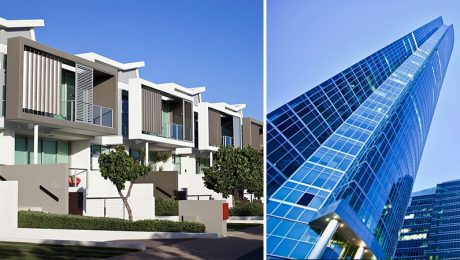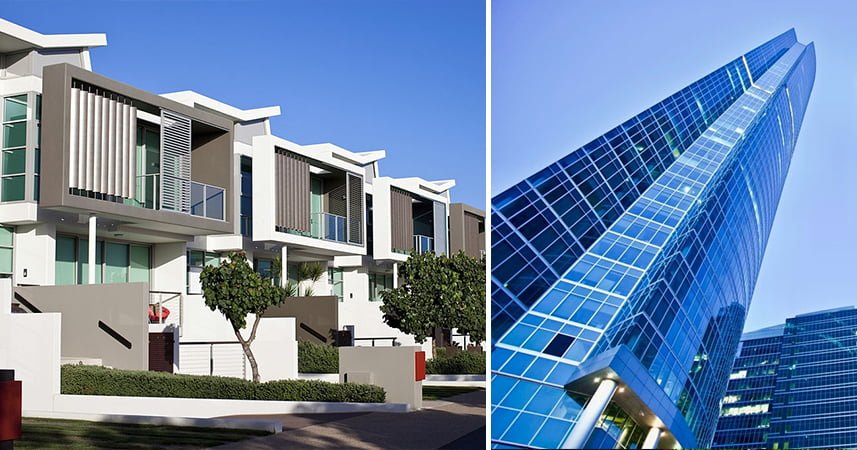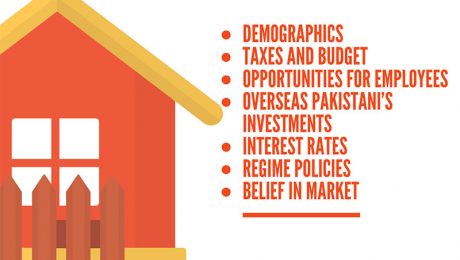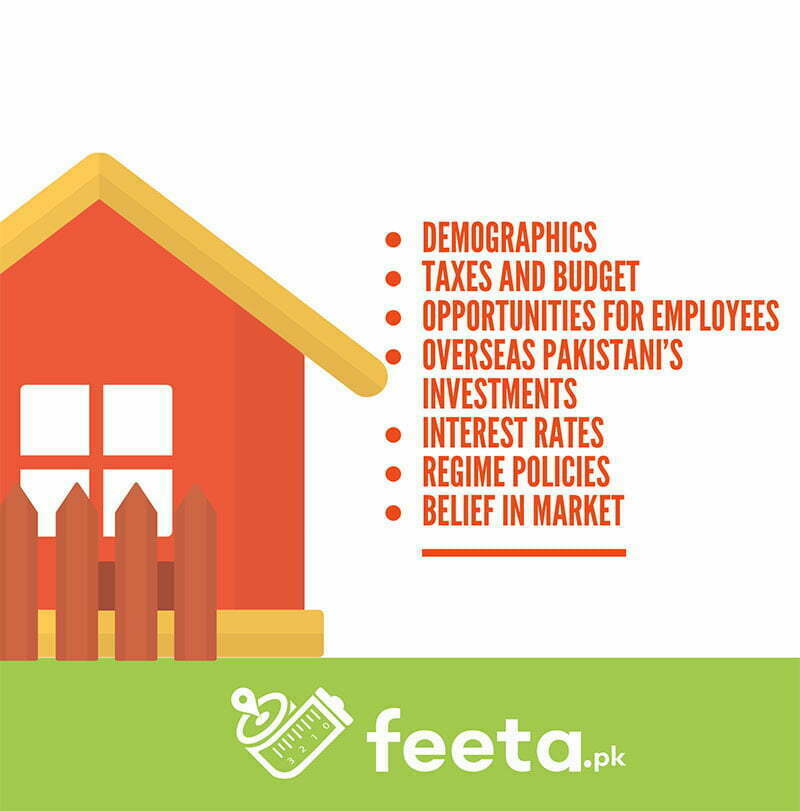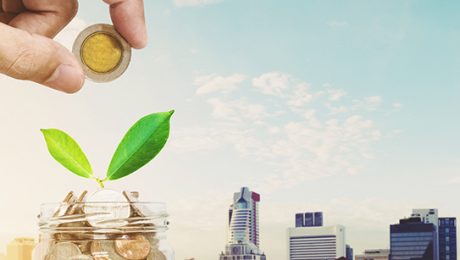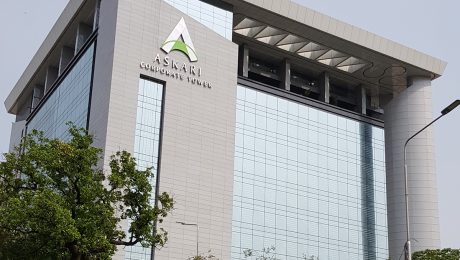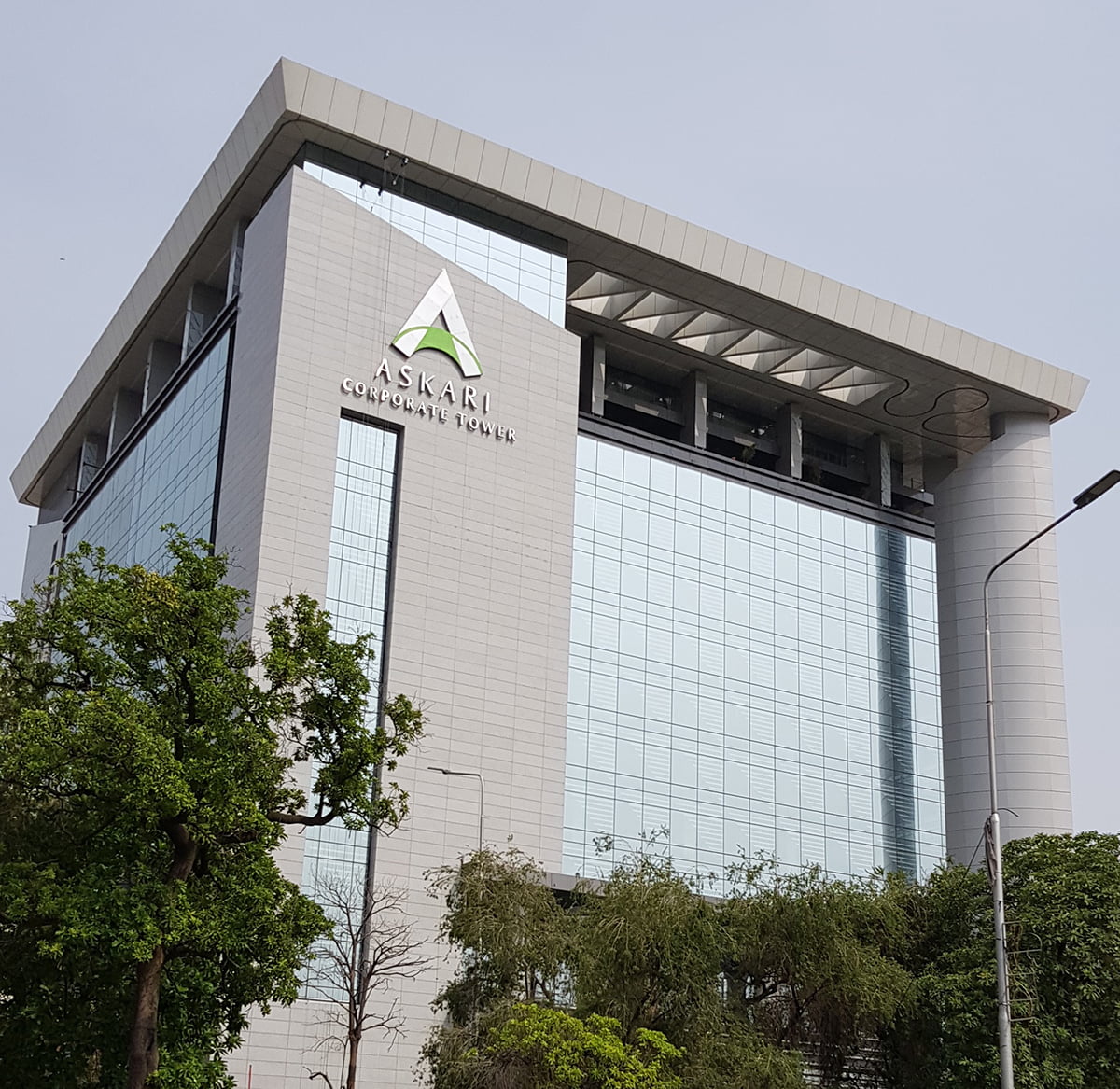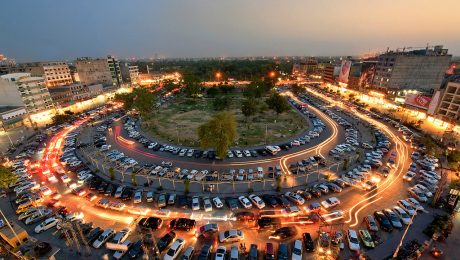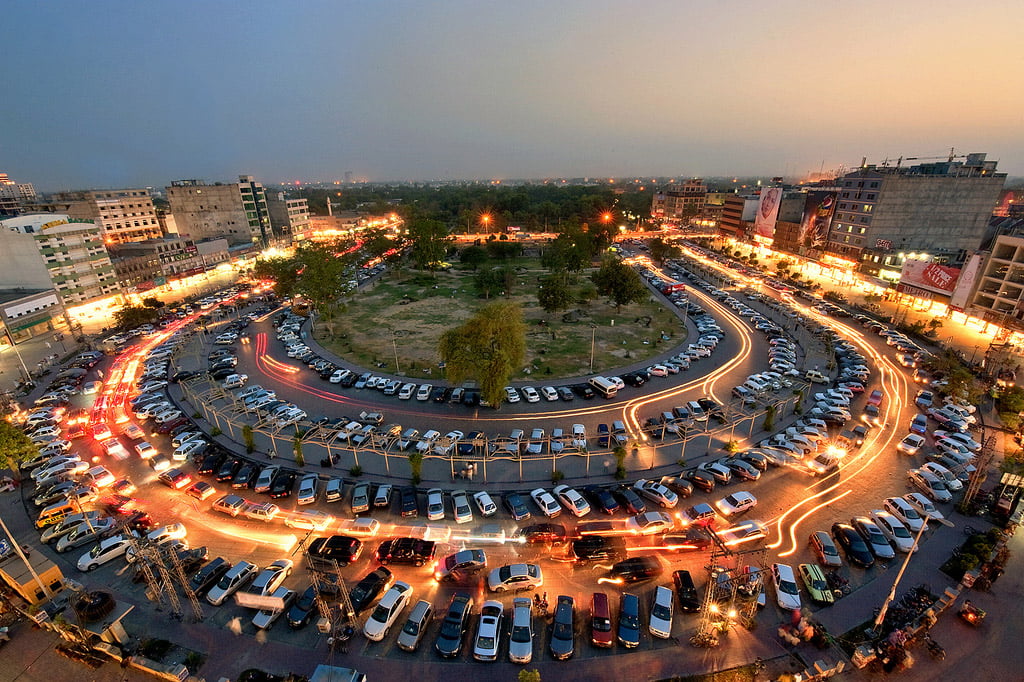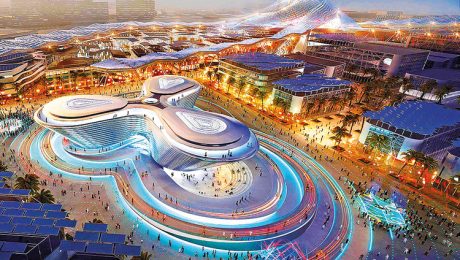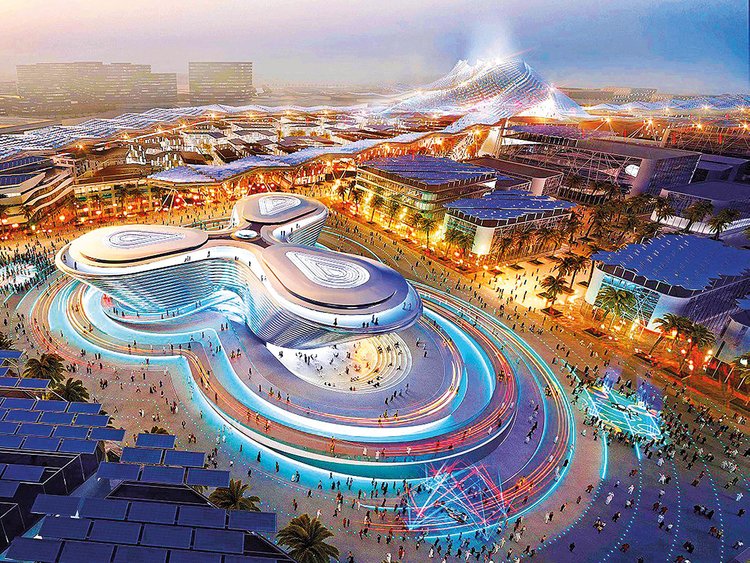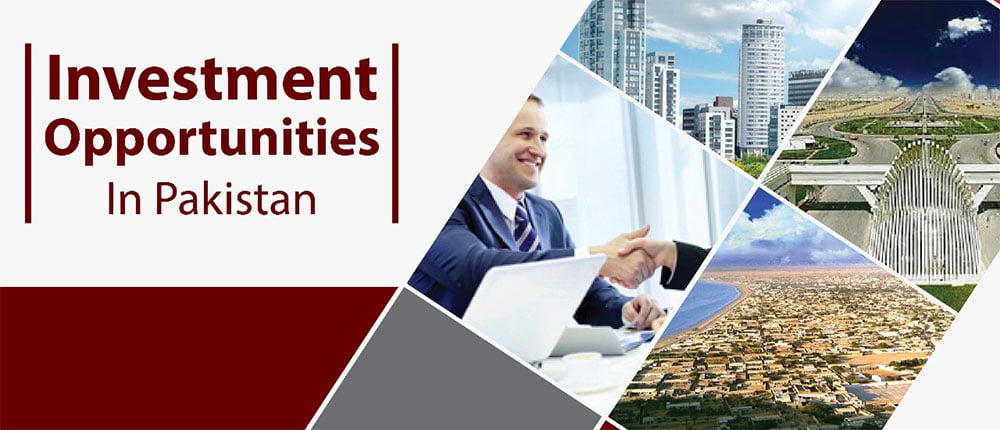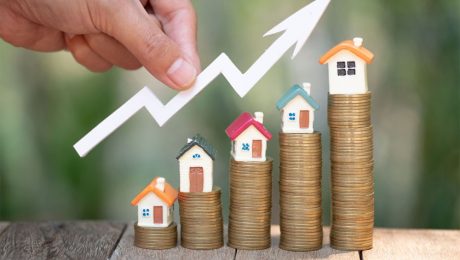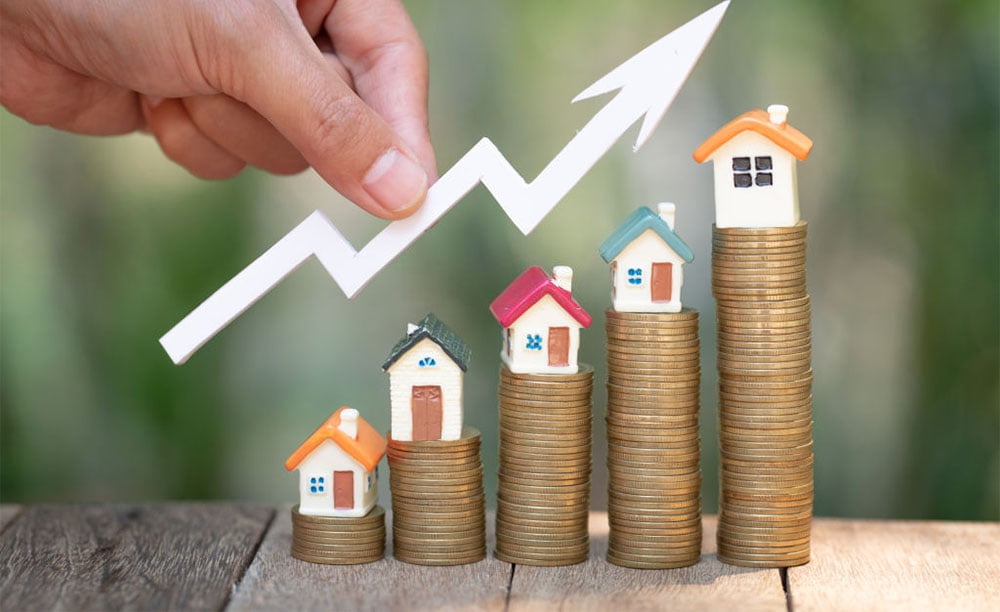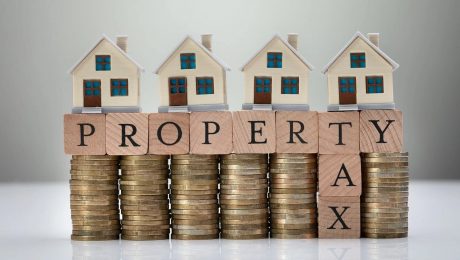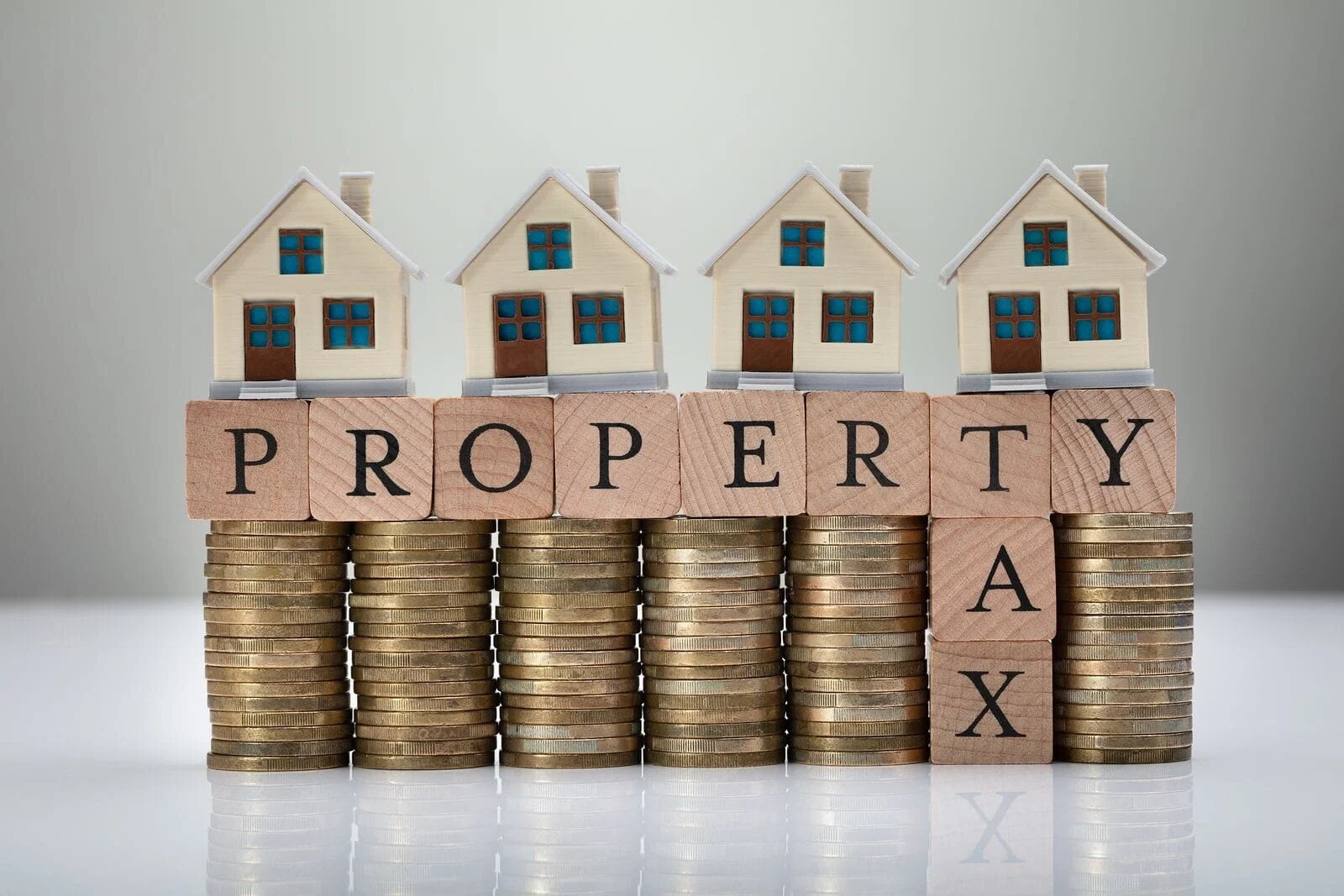Worried about renting a house? We have your back.
If you are planning to rent a property then some really important things need to be considered before renting a house, apartment, or townhouse. First things first! Location is what matters nowadays and the necessities of daily life should be there such as, markets, grocery, and public transportation as well.
Usually, the landlords don’t really show that part of the house which needs to be renovated but you are required to check every possible damage that should be repaired before moving in.
Things to Consider Before Renting a Property
Worried about renting a property? Are you really supposed to be worried? No, because we have your back already. Following are the things you should take in consideration but you only have to read and move ahead to get more knowledge about it.
Location is important:
This is it! Firstly, it doesn’t matter if a house or apartment looks beautiful inside and out but when it doesn’t meet your needs, where it costs you to travel to school, grocery, markets, and necessities of daily life, so refrain from choosing such places as it is a matter of making your life easy. Secondly, the environment is of great importance when it comes to buying or renting a property, moreover, take a few days to check whether the area is safe or not, as if public transport works there and also if the place is too noisy or too hushed.
Is the property affordable?
Do not make it difficult for yourself, just look up for a property which you can afford and try to make these things easy for you so that you can go through other problems. Apart from this, if your budget is too low then you should wait for the right time whenever it becomes affordable. Do the math and sum up the savings you have, go through monthly rent, the taxes, moreover the bills you are going to get every month. Get yourself a better apartment or house as it does make difference in your lives.
Know-how of charges:
This is considered as one of the basic things you should be aware of, let us tell you how, you should not forget about the charges whenever get consulted by a real estate agent. Just ask them all the queries regarding rents and purposes as it is mandatory, moreover, your basic right. You are supposed to ask questions like, what is the criteria of down payment per week? Or how much it costs per head? And everything related to it.
What are the conditions?
You must be thinking about what kind of conditions, right? Go ahead to know more, conditions such as either the house is west-open or not and also if it doesn’t struggle with the ventilation. When viewing a house in the sunshine, it looks different and it is impossible to imagine as if the view is the same in winter. Evaluate the house as carefully as if you are going to buy it if any kind of issue is noticed before then it would be good for you so that you can convince your landlord to repair it.
As if the timing is right?
Well, the rental market moves often quickly but it doesn’t mean to accept the tenancy even before it mandatory. A mighty crossover would allow you to move all the items easily and give you enough time to clean up your previous place. So better look for the flexibility in a house you are going to rent.
Why the people are leaving who lived before?
This is one of your right to ask the current tenants that why they are leaving, and what made them leave a property, though it can help you to know about insights. Ask them about the rent they were paying, if it looks affordable then go for it before even having a second thought. There might come some obstacles from the nasty landlords, now it is your call to get through it and keep an eye on each thing before time.
Conclusion:
If you go through all the considerations then it will become helpful for you to decide what’s best for you and your future will be better than ever, so you should be aware of everything related to real estate buying, selling, renting, and investing purposes for own knowledge.
Worried about renting a house? We have your back.
Residential vs. Commercial Property
Are you confused about buying which of these properties? Then you’re at a right place, so go ahead to remove all the confusions you are struggling with and search for what’s best for you. Talking about the best and more secured opportunity to invest in Pakistan is real estate market which not only provides profitable properties but also helps you to be financially stabled.
There are uncountable options in properties but two have really got an importance out of all those, hence are known as commercial and residential properties. These properties have always been a part of debate since decades. Let’s have a look on both types and what they have more to offer!
What is commercial property?
Commercial properties such as retail shops, Hotels, public necessities, office buildings, warehouses, industrial buildings etcetera. From commercial property, an owner can start a business either owning or renting a space as companies tend to rent the property rather than owning it. The commercial property is known to be considerable investment market as real estate is not the key business so they prefer not to buy but rent. This is way better and productive asset than residential property.
The Benefits of commercial Property
Usually there are so many benefits of owning commercial property because owners of business face different issues regarding either rent or buy their office space. In real estate market, a commercial property can provide the basis for growing businesses. Following are the benefits you should be aware.
- Favorable Rates
- Fair Appreciation
- Reasonable Prices
- Chances of Cash flow
Favorable Rates:
The mortgage interest rate is the most important cost of buying real estate property. Rates are always in the favor of purchaser as it continues to be low all the time. It is usually one of a difficult task to maintain a spotless financial profile to obtain a challenge, meanwhile, it is better to be prepared with a comprehensive business Idea so that success would become easier for you. So this is one of the basic benefit one could ever come across.
Fair Appreciation:
When you work with equity and justice in your business, it becomes worth profitable so that you can purchase to grow your business better. To manage your business with high versatility, this would help in all the purposes. At the time of retirement, you can also sell your property to another purchaser as it gives so many options in the time of your needs.
Reasonable Prices
For dental practices, commercial properties are less expensive than before, same goes for industrial, and office spaces. It costs less to buy a property than to rent it, during the time of real estate downfall, the value of property decreased and the rates were high. But now is the time to purchase or rent a commercial property as the prices are low enough to meet your financial status.
Chances of cash flow:
Cash flow is what we actually wish for, whenever investing in a business. So if you buy a commercial property that contains a space for residents then you definitely have further options for cash flow through a rental income too.
What is Residential property?
Apparently, Residential properties are those which includes properties other than commercial real estate, such as apartments, single-family houses, and townhouses etcetera. Now it depends on property owner whether to rent it or live in it. Renting means to enjoy extra income so this is why families prefer to rent residential properties in case of fruitful outcomes. It is definitely not beneficial for those who lives in someone’s house as this place is considered as a primary residence for them. Now your wait is over, you are all knowledgeable enough now where to invest or what to purchase in both the properties.
Benefits of Residential Property
Residential properties involves plenty of benefits for the people who rent their properties as well as to live in it. Following are some of the advantages you should be aware of:
- Value dependency
- Beneficial Investment
- Rental income
- Opportunity for unemployed people
Value Dependency:
It is the best way to make money as per increment in properties which means whenever the worth of property increases, you would get benefitted in terms of renting it. In case of purchasing the property, the decrease in value would be fruitful to buy at this time.
Beneficial Investment:
This type of property can let you leverage your investments in a way that if you purchase a house and invest money for the renovation purpose to make it look attractive towards the rentals. The investment you do a single time would become profitable as an outcome.
Rental Income:
In a world full of competition, the income from a job is not enough in this era as it requires other than needs. So renting your real estate residential property will be the best option to get income every month to fulfill all the requirements, also saving that money in future would be a perfect idea.
Opportunity for unemployed People:
Renting property is one of the best options for unemployed people, you just have to invest your saving in a property and rent it to get income every month.
Types of Commercial and Residential Property
There are several types in which four are needed to be discussed
Primary purpose:
The commercial properties come by for business and investment purposes which means people gat shops and office spaces to earn income, monthly. However, residential properties are made for nuclear or joint families. The only purpose is accommodation of residential area.
Opportunities:
This type is purely used for commerce and business, so offices and shops might act as basic business centers for them. Meanwhile, residential property is also about renting and you have an option to sell whenever the right time comes.
Laws and Regulation:
The residential property has different laws and regulations than a commercial property as residential is way more lenient because it focuses on the rights of residents while commercial laws and strict and based on equal rights, so both parties are required to negotiate.
Design and structure:
Residential property always comes up with different design and structure like design of apartments hit different and architecture of house hits different. On the other hand commercial suffers different costs in terms of warehouses, piping and wiring, all costs hit differently.
Residential vs. Commercial Property
- Published in News, Tips & Advice, Trends
Factors Affecting Real Estate Market
What is Real Estate Investment?
Are you unaware of how, when, or where to invest? Then you are in the right place. Real estate investment is one of the most beneficial yet profitable investment opportunities in an entire country. Real estate investment is that you have to buy a property after consulting your real estate agent. However, it is more likely to get gain than to lose. The property market of Pakistan has come to light and become a major contributor to the socio-economic development of the country. This is considered as the best way to secure money for a long period and also being profitable, the outcomes are always in support of gaining-good in return.
Factors Affecting the Real Estate Market:
Before heading towards real estate investment, you definitely need to have knowledge about some factors that affect the real estate market. Here is the list of some important factors.
- Demographics
- Taxes and Budget
- Opportunities for Employees
- Overseas Pakistani’s Investments
- Interest Rates
- Regime Policies
- Belief in Market
Demographics of Country:
Demographics of a country play a main role in terms of buying, selling, or renting purposes. The real estate market is directly affected by some categories of demographic data like the socio-economic status of the generic population, it depends on the earnings of people likewise, whether they belong to middle class or elite class. You either be searching for a big house for a joint family or small house for just 2-3 individuals, it depends on the divisions of family systems.
The one is a nuclear family that possesses a small apartment or house, the second one is the joint family system which requires a huge house apparently. So in that case, Pakistan’s property has great value and demand which is affected by divisions. Hence, the Pakistan real estate market is directly affected by the demographics of the country.
Taxes and Budget:
Pakistan property market was in serious economic crisis for a decade but 2019 was a turn over for Pakistan real estate market and the economy as well. Eventually, the cost structure of property requires a budget and it depends on the increased or decreased prices of raw materials for instance; cement, bricks, or fixtures etcetera. The prices of the house can go down easily if the low-cost raw material is used. In that case, lower the cost of construction, lower will be the business. So if the budget is low, the Pakistan real estate market will fall.
Tax rate:
- Withholding tax rate has been decreased from 2-1% on rooted properties
- Withholding tax collection on buying property disregards of its market value
- Withholding tax collection on selling property, where the holding property is remained above or below 5 years
Opportunities for Employees:
Do you want to know how much the employees get benefitted by the opportunities they have been given when it comes to real estate sector? You probably need to know that the proportion of the country is directly related to the ‘employment to population ratio’. The financial independence shows the high employment ratio which means more employed people will be more financially stable. Hence, the prices will become affordable for them in terms of buying or selling house.
Overseas Pakistani’s investments:
Overseas Pakistani’s have always made handsome investments to our country’s real estate sector and surely played a vital role. Some major developments like the Naya Pakistan Housing Scheme where houses are being constructed in multiple cities around different cities of Pakistan.
How to make friendly-relation with investors?
The basic aim is to make investor-friendly relations and welcome the overseas Pakistanis in a world of real estate sector. The investments are highly profitable and whenever someone invests, they bring resources inside your country for instance; Money, technology, and machinery etcetera. So it is considered one of the biggest factors to bloom the real estate market.
Interest rates on properties
Interest rates on properties play a critical role in the growth and development of the real estate market. Well, you know in some ways interest is forbidden and people don’t really invest along with interest. The buying property depends upon interest rates, which means the slight change in interest affects the trend of real estate market. This major factor would let people find another business rather than investing on real estate market.
Due to the socio-economic and political situation of the country, Pakistan’s stock market varies quickly, which results in the up and down of the real estate market, eventually, the graph comes down in terms of high-interest rates. Lower the interest rate, greater will be the value of property in Pakistan.
Regime Policies
Policies made by the government play a main role in the development and growth of the real estate sector. The support in reducing taxes and subsidies can be beneficial for the investors and also for the betterment of the infrastructure of Pakistan. Moreover, foreigners might get attracted to invest here. So basically the relation should be friendly or else people will not invest in it here.
Belief in the Market
The most important factor is to create a better image in the market, real agents are supposed, to be honest, so that investors can fully trust them. As it is all about savings of people and they think twice or thrice before even investing so it is the duty of builders and developers to develop trust among people or frauds would not let people invest in the real estate market.
Conclusion:
These are the factors that greatly affect the market of real estate and in terms of any mishaps while buying or selling properties, the market will go down. You are required to have knowledge about demographics, taxes, and budget rates, the opportunities are given to employees, and government policies etcetera before investing. As we know that the real estate market is getting better and we can clearly see the bright future of this market, so do not hesitate or think twice or thrice because we care for your savings and future as well. So just find out a professional real estate agent and try to have firm faith. Happy investing!
Factors Affecting Real Estate Market
- Published in News
5 Mistakes should be avoided by a Real Estate Investor
As a matter of fact, investing money in a real estate would never be an easy task for beginners. But there’s nothing to worry about as you only need to avoid some of the mistakes that might lead to failure. Following are the ten mistakes, a real estate investor must avoid.
1. Improper research and planning:
A real estate investor is likely to make this mistake more often. Without proper research about property and real estate agency one shouldn’t consider to buy or invest. Don’t get over excited before or refrain from trusting your real estate agent so early, inquiry is highly required about the area, neighborhood, and location etcetera. It is important to research about builder’s history, civic facilities, upcoming projects and value of that area. You can also research about it on internet as there are different websites which might help you get the best with no regrets.
2. Being effected by ‘The Market’:
Everything comes down your knees if you don’t get affected by the market more than your requirements. Real estate market rotates in a cycle of ups and downs where there comes a good time for buyers or sellers when the prices of market on the boom. So it is better not to wait for the right time, you are definitely gambling with the future of your family if you do so.
3. Underestimating your budget:
Every homebuyer is always looking for a house that fits their budget because an expensive property can be better but appealing also which questions your expenses. It is a human nature to look for something a little more attractive which may exceeds limit, yet some banks provide loans as per your finances and ability to repay. Before even investing you need to check out the expenses for renovations, furnishing, and painting etcetera. Better make a list of expenses including tax, or insurance so that decision could become easier for you.
4. Not opting for a professional real agent:
This is the most common mistake a real estate investor should avoid while not opting a professional agent. Whenever you plan about doing an investment in a real estate market, you should choose a reputed yet experienced agent who might charge you a bit more, as it is quite difficult to trust strangers so you are supposed to look out for someone who has a perfect knowledge about ins and outs of real estate market. For instance; rules and regulations, and current market trends as well. The best way to find out who is an experienced real agent is to look into his past performance so you can get freed from types of scams.
5. Not executing an investment strategy:
Not every investor comes with plan or strategy about what and where to invest and they don’t have even knowledge about the outcomes. Hence, the requirements depend upon experience, age, and income level etcetera. Likewise, young generation looks for trending styles while retired would prefer a stable cash flow. So never come up to invest without making strategies.
5 Mistakes should be avoided by a Real Estate Investor
- Published in News
Investment in Pakistan’s Real Estate Market
In real estate market, 2019 is considered as a worse year for Pakistan property. As we know that buyers or investors are always seeking for the best time to invest so maybe 2020 is going to be a perfect year for them to invest in market. Though sellers want to know about their properties to be sold out and would look attractive towards the buyers or investors. As you know that this market is beneficial for business purpose, like construction etcetera, so basically 2020 will turn out to be advantageous for suppliers and purchasers as well. Investing in the properties don’t supply shelter for living, anyhow, it looks like a best resource for saving money for one’s future.
What Buyers and Sellers are supposed to do?
As we have already mentioned about 2019 that it has been the worst year for both buyers and sellers. However, sellers are not in good condition as compared to buyers because a seller has only two options, first; they should wait for the price to get high again. Second; sell their property at a low prices to ignore bigger losses. On the other hand, buyers and investors are supposed to get knowledge about the market of earlier 5-10 years. However, 2003-6 and 2013 were the best years for buyers, yet 2007 till 2009 and now 2019 were the worst years.
Recent Trends of Realty Estate Pakistan:
- Condition of agents:
Due to the fall of real estate market, agents were badly effected and we got to know through current news that about 40-45% of them have already left because of low income. So condition looks worse due to the fact that they have confronted great loss and severe crisis.
- Capacity of property undertaking:
Recently, transactions found to be lowest as compared to 2015-16. In 2016 transactions and data file transmissions were recorded 180-200 on daily basis in DHA Lahore but in 2019 it turned out to be 10-20. Lower amount of undertaking is directly proportional to low investments in real estate so apparently this equation leads to a price decline. As capacity of property dealings is an exemplary indicator of the conditions of market.
- Transfer of market to buyers from investors:
Pakistan property has changed to genuine buyers from investors, buyers who now only buy properties to live in. The transfer has now ended and price too have cooled down. But before this, Pakistan property on daily basis used to market shares and stocks.
Valuable areas for investment in 2020:
Are you looking out to invest some handsome amount where you will be benefitted too? Then you should be likely to invest in subsequent areas of Karachi without being remorse at the end of the day.
- Gulshan e Maymar:
In 2019 this area has changed a lot commercially and has done an uncertain job to make it valuable for investors. However, investors earned a very handsome yield in commercial areas of Gulshan e Maymar against their investments. Although, this area is considered one of the famous areas of Karachi that contains amazing parks with beautiful infrastructure and also is clean as compared to other commercial areas of this city. Anyhow, investing in such areas would be advantageous.
- Bahria Town Karachi:
Bahria town is known to be one of the biggest developments, Karachi has ever come across, which has given a unique concept of gated residential advancement. This project has given so much to the real estate sector like jobs for construction purpose and much more. This is the only residential society around Pakistan that is deficit free from security and power. After getting huge success from Lahore, it then expanded in Islamabad and Karachi as well. Though, without uncertainty bahria town Karachi becomes even more successful because of having elite lifestyle, safety and vast land. Bahria town has not only made elite class houses and flats for the upper class community, yet, also made Awami Villas for lower and middle class community. But due to certain circumstances in land disputes and non-reimbursement of some properties, regrettably we will not recommend you to invest in 2020 because it is still struggling. So this year, better refrain from investing in bahria except for some blocks.
- Defense Housing Authority (DHA) Karachi:
Defense Housing Authority lie under the administration of Pakistan Army and is an another massive success in housing schemes. DHA has expanded in distinct cities of Pakistan such as Lahore, Karachi, Islamabad etcetera and currently it is launched in Gujranwala and Multan as well. DHA come under highly secured areas though it is called an armed area. So investing your amount in here would definitely be beneficial in 2020 as we have already elucidated its features and exquisite infrastructure.
The residential development schemes such that, Bahria Town and DHA are playing cardinal role in the advancement of real estate sector. By the government plans and continuous efforts from such residential would evaluate this sector and it will definitely increase the economy of our country in the upcoming years.
Basic advice for investors in 2020:
This year would be beneficial for the investors, likewise PM Imran Khan has already given permission to invest and no queries such that, where did this money come from or any question regarding your income will be asked. Consider it a plus point because from now onwards you are free to invest. Before buying or selling any property, you survey different categories like apartments, houses, industrial, residential or commercial area and invest wherever or whatever you want but we advise you to look after every possible complication that would refrain you from misleading by the real estate which has no value. It is solely way better to invest in less popular area as prices are going to increase in future as predicted. Try to be real estate investor not a risk-taker, therefore, do not buy illegal properties just for the sake of investing less money because somehow, you are going to fulfil its requirements if caught red-handed.
Investment in Pakistan’s Real Estate Market
- Published in News, Tips & Advice, Trends
Real estate: Strict regulation of market need of the hour
Lahore:
Pakistan’s real estate market is developing with every passing day. The emergence of new real estate groups is changing the investment trend from long to short term.
Though many cautious investors park their money in the construction of housing units or simply purchase completely built units to rent them out for income generation, still a majority prefers to invest in land for a better or sometimes quick return, experts say.
The charm of better and instant return has increased the flow of liquidity in the property market and most of the people are not hesitant to invest their savings. In the past few years, the unstable law and order situation and a high cost of doing business had forced many to sell their business and put money in the real estate market.
The diminishing agriculture income is another reason for many small and medium-sized landlords to sell rural land and go for pumping money into urban property.
Though there are some rules and regulations and state authorities to deal with matters pertaining to the sale and purchase of land, they are not helping to build investor confidence. Apart from some private housing schemes, fraud and land-grabbing is the norm and state laws fail to offer any relief and solution to the problem.
As a result, experts say, money keeps on circulating among few particular housing schemes, which are marketed as a safe haven for investment with better infrastructure and other facilities. Nevertheless, the developers of these private housing schemes often fail to hand over possession to the buyers on the announced date.
Price manipulation
For the past few years, the game of investment starts with the issuance of registration forms of a housing society, then these are converted into files and at later stages plot numbers are given after balloting. Between these processes, a lot of money flows as the investment is not huge and anyone with a few thousand rupees can enter the arena to fetch a handsome return.
Almost in every case, according to experts, the management of a housing society is accused of releasing registration forms or plot files more than the actual number of plots.
The ultimate beneficiaries are the real estate groups and some big investors. They work as a cartel to set high prices for the project’s popularity and at later stages they weaken the market and buy plots at much lower rates to fix the issue of excess files.
Every time this happens, but whenever the same group announces plan for developing another housing society, investors rush again to buy the property and the same old story is repeated. Perhaps, they have not many investment choices available.
Experts say there is a dire need to regulate and document the real estate market and put in place a strong check and balance mechanism as investor’s numbers are increasing due to rapid urbanization. Only strict rules and an independent authority could put a check on such developers in order to force them to deliver what they have promised.
These measures will help in limiting the unexpected hike in land prices and slowly turn this scattered but an important segment of the economy into an organized sector. This will also help in boosting investor confidence and once things are streamlined, real estate could prove to be one of the most lucrative sectors both for investors and the government.
Real estate: Strict regulation of market need of the hour
- Published in News
Pakistan’s valiant real estate market
LAHORE:
Pakistan’s real estate market tends to ignore broad scale macroeconomic indicators, posting growth even as foreign direct investment falls or infrastructure spending remains stingy.
Data from an online property portal, Zameen.com, shows the country’s property market has posted a phenomenal growth of 118% in the last five years. This high growth rate can be attributed to robust demand from seasonal investors, genuine buyers and an overwhelmingly better security situation.
Karachi:
Karachi has led the way in terms of growth with the strongest figures coming from the port city’s residential plots. In Karachi, an average residential plot price in January 2011 was at Rs2, 276 per square feet but amounted to Rs8,089 by January 2016. The city posted a growth of 255% in the last five years.
Lahore’s case is not that different. Data revealed that average prices of residential plots have observed a 149% growth in the last five years. Average price in the city soared to Rs3,339 per square feet in January 2016 from Rs1,336 in January 2011.
The country’s capital city also posted an average growth of 143% in residential plots, where prices reached Rs2, 699 per square feet in January 2016 from Rs1,108 per square feet in January 2011.
Zameen.com Chief Executive Officer Zeeshan Ali Khan said that it is likely that the growth trend will continue due to increasing urbanisation and demand for housing.
“Pakistan’s economy is expected to grow and with the China Pakistan Economic Corridor (CPEC) coming up additional opportunities for the economy will open including the real estate sector.”
Khan said that the effect of CPEC is already evident in Gwadar, where average property prices have risen up to 70%. In some areas of Gwadar, a growth of around 200% has been recorded over the last few years, said Khan.
While many real estate experts believe that prices have reached a peak and a downfall is imminent, Khan said the slide is unlikely. “Majority of the dealings are carried out in cash and there is less dependence on mortgage loan facilities. The market remains a safe bet.
“There is little or no concept of mortgage finances in Pakistan to buy land or a housing unit. We mostly deal in cash. Hence, in stagnant markets, people have the much-needed holding power.”
Pakistan’s valiant real estate market
- Published in News
Pakistan’s property market awaits chance for an upturn
New government and its economic reforms could bring about that reason to cheer
Dubai
A crippling currency decline and a worsening economy were not able to crimp Pakistan’s property market in the last 18 months. Now, with the political situation having cleared up with a new government in power, developers are building up some great expectations on the sector’s performance.
“Developers for the most part have remained aggressive with their launches, not only in the major cities but in Tier 2 areas of Hyderabad, Peshawar and Quetta as well,” said Furqan Hussain, who heads Quice Industries. “This trend is expected to continue because the depth of demand is clearly self-evident.” The developer currently has three projects in Karachi City, and is exploring the possibility of making an appearance in Islamabad within the next two three years.
Hussain’s optimism would have seemed misplaced just six months ago. At the time, the rupee seemed locked into a spiral, and had dropped more than 20 per cent since January 2017. (A dollar gets Rs124.12 based on the Friday exchange rate.)
There was constant chatter about the need for some sort of help from the International Monetary Fund to prop up a fast deteriorating situation.
But the recent elections and Imran Khan’s step up as Prime Minister seem to have brought the economy some breathing space. In the real estate space, developers say there aren’t any overt concerns about high supply getting caught out by muted demand.
Zeeshan Zaki, Director at Saima Builders, said, “Demand for offplan remains robust in Karachi and that’s across all income strata. We have not experienced an adverse slowdown despite the political climate prior to the elections.
“With regards to our immediate plans, we see no change to our pace of launches. In fact, we feel the pace might even increase given the optimism over the new government’s policies.”
Will non-resident Pakistanis come through in sizeable numbers? According to Hussain, apart from at the top end of the residential market, expect investment flow into Pakistan real estate hasn’t exactly being seeing a surge.
According to Sameer Lakhani, Managing Director at the consultancy Global Capital Partners, “Real estate values did remained muted over the last year — but this is not the same as saying demand is projected to fall. Pakistan faces an acute housing shortage across all income levels, and housing schemes that have thus far been announced will not fully address this shortage.
“While the overall picture remains optimistic after the elections, market participants are still waiting on the direction of economic policies by the new government and which will set the tone for 2019 and beyond. Should the government provide impetus for the affordable housing push — backed by mortgage reform and the offering of such products by the banking sector — property values can then enter a period of sustained growth.
“This optimism obviously needs to be tempered against the backdrop of rising interest rates, which is always a negative for real estate markets.”
But for the moment, developers are willing to get by on that optimism alone. After all, they have had to get through much worse in the recent past. for Pak Real estate Jobs.
Pakistan’s property market awaits chance for an upturn
- Published in News
Dubai expects World Expo 2020 to boost sluggish real estate market
Dubai: The World Expo in 2020 has the potential to stimulate Dubai’s downhill real estate market, US credit rating agency Standard and Poor’s (S&P) said Tuesday.
Rents and prices of the real estate market fell 5 percent to 10 percent in 2017 and will continue the trend until 2019, said S&P in its study titled “Dubai’s Real Estate Slump Is Set To Persist, With Only Expo 2020 Offering Any Hope.”
However, how much stimulus the world expo, which will run from October 2020 until April 2021, could provide for Gulf Arab sheikhdom with 2.5 million inhabitants “remains to be seen,” it added.
“In 2020, the sector could well start to benefit from the potential increase in economic activity and positive business sentiment attached to Expo,” the rate agency noted.
Dubai 2018 budget foresees $15.5 bn expenditure ahead of Expo
“The expected 25 million or more visitors and floods of new residents to Dubai should support the market,” it explained.
But it also warned that a speculative surge in prices, devoid of any demand and supply mismatch, could be a negative side effect of the boom.
Earlier in January, real global estate service firm JLL said approximately 575,000 new real estate units could enter the market until 2020.
The Expo 2020 venue will be held near Dubai’s newest free zone Dubai South, wedged between Dubai’s free port Jebel Ali and the 2010 opened Al Maktoum International airport, which is poised to become the world’s biggest civil aviation hub once expanded and completed by 2025.
Dubai expects World Expo 2020 to boost sluggish real estate market
- Published in News
Market insights: Property Investment in Pakistan – Stay Ahead of the Markets
Purchasing a home (whether a house or an apartment) is widely considered a secure and profitable form of investment. And in Pakistan’s case, there is more truth to this statement than meets the eye. A distinctive feature of the country’s real estate sector is that it hits record highs and lows over a relatively short period of a few years. At times of bullish trends in the market, the sector attains unprecedented growth levels of over 10%. In sharp contrast, the realty industry in most other parts of the world follows a more steady growth pattern.
The State Bank of Pakistan (SBP), in its report on ‘The State of Pakistan’s Economy’, recently noted that the combined contribution of the construction and housing sectors “has been consistently higher than nine-percent over the past decade”. The document further mentioned that the real estate industry stimulates activities in other affiliated sectors of the national economy – such as cement, wood, steel, bricks, and cables.
Unprecedented Growth Trends – Leading to High Investment Returns
The central bank also cites data on concurrent market prices in the same report. Since 2011, according to estimates, the prices of plots in Pakistan have nearly tripled, whereas house prices have surged by 139%. Experts identify this market dynamic as having been fuelled by intensive speculation. They say that investors in Pakistan treat real estate as a commodity: property is purchased in bulk, and later sold for higher gains.
Such activities are no longer limited to the mainstream urban centers. Gated communities, for instance, are increasingly gaining traction in the smaller cities, as opposed to their somewhat slower entrenchment in major metropolises like Lahore, Karachi and Islamabad. These large-city locations have almost reached saturation levels concerning their land availability for new projects. A large number of builders and developers have also opted for apartments and mixed-development situated in the suburbs of these cities.
In documenting these trends, local property experts think that increased levels of urbanization and migration have resulted in the development of second-tier city centers. They also see no merit in the perception that the residential and commercial projects in these areas are affected by low consumer demand. Instead, they contend that the residents of smaller cities have a lot of buying power and affluence – owing to a flourishing agrarian economy that works to keep their pockets full.
Exorbitant Profits are ‘in for the taking’
When questioned on why real estate is considered to be the most attractive form of investment in the country, property market gurus refer to it as being a staple mode of securing hard-earned money that yields both short-term and long-term gains. Investors, further, have the option to choose from plots, houses, farmhouses, and apartments; some of the safest kinds of securities on offer.
A good way to sift through these choices (as many locals have learned by now) is to make use of one of the many online platforms that have recently emerged in the country’s web-scape – all targeted at cashing-in on some part of the real estate pie. Some, such as the recently launched feeta.pk, work by providing free access to dynamic property listings (considered ready for the taking). Others are organized more along the lines of a conventional brick ‘n’ mortar real estate brokerage – where you first have to go through a ‘middle man’ to connect with your preferred property option.
Market insights: Property Investment in Pakistan – Stay Ahead of the Markets
- Published in News, Tips & Advice, Trends
Prospects & Challenges in 2020 and CPEC
PAKISTAN’S real estate has a large contribution to its economic growth. According to a World Bank estimate, the size of a country’s real estate assets constitutes between 60 and 70% of the country’s total wealth; if these estimates are applied to Pakistan, the estimated size of the real estate sector would be $300 to $400 billion. Because of many financial, economic and political challenges, real estate has not performed well in 2019. But, there are bright prospects that there will be a high growth in the real sector in 2020.
There has been a slowdown in real estate since 2017 because of political instability and uncertainty of economic and financial policies. Absence of incentives for the investors, the imposition of ban on non-filers to buy a property worth more than 5 million unless they register themselves with the Federal Board of Revenue (FBR), FBR’s strict regulation on banking transactions of non-filers, levying of high taxes on transfers of property discouraged the investors to put their money in the sector in 2018-19. Another factor that contributed to slowdown of the real estate is non-utilization of developmental budget that led to contraction of construction sector and consequently, realty sector.
Despite the gloomy outlook of the real estate sector, there are compelling facts that indicate that the 2020 year will be encouraging for the investors, especially for the overseas Pakistanis. Among the promising factors which paint encouraging pictures for the real estate sector are the boom of the tourism industry. Inbound tourism in Pakistan has witnessed a marked increase of over 70 percent during the year 2019 as compared to corresponding year, mainly due to multiple initiatives, especially improved security situations.
Similarly, Pakistan is treading the right path by creating a favorable environment for businesses as the World Bank has ranked Pakistan 108th in global ranking in its “Doing Business 2020” report. The previous ranking of Pakistan was 136 in ease of business report which indicates the improvement of 28 places from previous year. Improved business environment will attract foreign direct investment into the country and create employment opportunities for the youth. According to a World Bank report, an increase in foreign investment and an expansion of the market has a direct link with the worth of real estate.
CPEC is another mammoth development project that will transform the economy of Pakistan and resultantly, the real estate sector will boom in the coming years. Special economic zones of CPEC are yet to be completed, but the positive impact of CPEC can be seen in the form of improved situation of the power sector and partial completion of the Lahore-Karachi motorway. Distance between Lahore and Multan has been cut short to 3 and a half hours from an earlier 5-hour distance. Businesses and investors are now touting Multan as the new economic hub of Pakistan. Development of DHA Multan and DHA Bahawalpur are some of the few examples that give credence to this fact that CPEC will transform the real estate business in 2020.
There is no denying the fact that the coming years will be an expansion of the real estate sector.
However, there are certain challenges to progress in the real estate sector in Pakistan. Withholding tax on non-filers on banking transactions, FBR notices to banking customers to authenticate their money sources are shattering the confidences of investors and compelling them to do banking transactions in cash. Up to 37 percent of the banking transactions are in cash which reduces the financial industry’s lending ability, says Asad Umar, former Finance Minister. This needs to be brought down to 25pc, and in Bangladesh, the cash-to-deposit ratio is at 16pc, he observed.
Likewise, Pakistani Diaspora is an asset to Pakistan as they spend huge amounts of money to Pakistan. According to the State Bank, Pakistan received a record $21.84 billion in remittances in 2019-20. The government needs to understand the fact that Overseas Pakistanis only invest their money in the real estate sector as they are not able to do business in Pakistan. The cumbersome procedure, imposition of high taxes on non-filer Overseas Pakistanis and requirement of visiting Pakistan for the completion of property acquiring process are some of many reasons that have discouraged Overseas Pakistanis to invest their money in the real estate sector.
All over the world, real estate and stock markets play a key role in the economic growth of a country. But, real estate in Pakistan is not able to reach its maximum potential because of the over-regulation by the FBR. At present, there is no tax on the property that is held for more than four years. But, a five percent tax will be imposed if the property of worth Rs 5 million is sold within four years and a 15 percent tax will be imposed on property sold within ten years of ownership. Increasing the tax rate and banning the non-filer is no solution. Only well-articulated research is required to broaden the tax net by incentivizing the non-filers to become filers.
The government needs to understand that its two projects of 5 million housing schemes and 10 million job schemes will only get success when the real estate sector grows because there are more than 100 industries, directly and indirectly, related to it. A boom in real estate will fuel growth in other industries such as the construction industry which accounts for 2% of the GDP of Pakistan. Taxing the already taxpayer will inflict harm in two ways; one it will squeeze the tax base as people will start using cash transactions instead of banking transaction and will hide their wealth, secondly, investors will park their wealth outside Pakistan and will purchase properties in Britain, Dubai, and investing money in offshore companies. There is a need to follow an incremental approach in reforming the system as fast track reforms can have negative implications for the economy, especially the real estate.
Prospects & Challenges in 2020 and CPEC
Property prices and forecast of real estate Pakistan 2020
Nowadays, it looks difficult to buy a house in Pakistan with all the taxes and as per increment of a dollar but there’s no need to get disheartened as Government has consoled the taxes as well. Inflation is rising so do the prices of houses. In 2019, nationwide prices rose to PKR 10,875 per square feet by 5.05%, also got dropped by 3.98%. However, for every house, city, area, and location there are distinct prices per Marla or Kanal, it depends. You need to know the actual prices per square feet before buying or selling houses. Following are the prices of 5 Marla houses in distinct cities of Pakistan:
Prices in Lahore:
- DHA (Defence Housing Authority):
In DHA Lahore, there are 4,020 properties on sale including total houses (3,919), flats (97), Penthouse (3), and farmhouse (1). The current price of 5 Marla house is 14,186 PKR per square feet, increased by 1.84% of last year.
- Bahria Town:
In Bahria Town, a total of 246 properties are on sale including houses (195), flats (48) and upper portions (2). The current price of 5 Marla house is 11,657 PKR per square feet, increased by 5.33% in a year.
- Johar Town:
In Johar Town, total houses between 2-6 Marla on sale are 1,442 including houses (1,231), flats (208) and lower portions (2). The current price is 13,633 PKR per square feet increased by 6.56% since last year.
- Wapda Town:
In Wapda Town, there are 626 properties between 4-6 Marla including houses. The current price of 1-5 Marla is 12,079 per square feet changed by -1.97% in a year.
Prices in Karachi:
- DHA:
It includes 5,507 properties including houses (2,986), flats (2,498), penthouse (18), lower portions (4), upper portion (1). The current price of Marla house is 38,829 PKR per square feet altered by 6.94 percent in a year.
- Bahria Town:
In Bahria Town Karachi, almost 6,175 houses for sale including houses (4.085), flats (14), penthouses (6), upper portions (1). The current price of 5 Marla house is 9,690 PKR per square feet increased by 2.49 percent in a year.
- Gulshan-e-Iqbal:
In Gulshan-e-Iqbal, there are almost 3,275 houses for sale including houses (996), flats (1,973), upper portions (209), lower portions (69), Penthouse (28). The current price of 5 Marla house is 16,534 PKR per square feet changed by -5.15% in a year.
Prices in Islamabad:
- DHA:
In DHA, there are 1,831 properties for sale including houses (1,202), flats (621), Penthouse (7), farmhouse (1). The current price of 5 Marla house is 10,596 PKR square per feet changed by 6.09% in a year.
- Bahria Town:
In Bahria Town, total aggregate is 965 properties on sale including houses (729), flats (226), farmhouse (6), penthouse (4). The current price of 5 Marla house is 12,920 PKR per square feet altered by 3.26%.
- Pakistan Public Works Department (PWD) housing scheme:
In PWD, total houses on sale are 157 including (137) houses and (20) flats. The current price of 5 Marla house is 7,559 PKR per square feet altered by 8.33% in a year.
Future of Real State of Pakistan
Real Estate Investment in Pakistan has always been a remunerative business to secure a healthy amount of your well-earned money. The good old buying and selling phenomenon makes it easier to understand the simple rule of gaining profit in this investment sector and with the right type of land guide by your side, the chances of harvesting huge sums of turnout are like a walk in the park.
Let’s start with the types of real estate you can invest your money in, either to get benefit from the deal or a home-sweet-home for your lovely family.
Types of Real Estate Pakistan:
Reducing the vast field of real estate investment sectors in Pakistan to six major categories, we have;
- Residential grounds
- Agricultural grounds
- Industrial grounds
- Commercial grounds
- Government grounds
- Stark grounds
Overview of Pakistan’s Real Estate Market:
To know which is the best way to get the most benefits out of your investments? It is better to know about the history of real estate business in Pakistan and here, we come handy, to have a short overview ready for you to give a glance at and get to know the reasonable investment plans.
Pakistan’s Real Estate Forecast 2016:
The year of 2016 had been a golden year in the history of Pakistan’s Real Estate Market. It was a profitable year for all the sellers as well as the realtors, giving everyone’s business a friendly nudge in the upward direction. Many new local real estate agencies came into view in Pakistan in 2016 for both short as well as long term business.
Pakistan’s Real Estate Forecast 2017:
In 2017, due to the currency depreciation and skepticism over government policy, many international investors decided to stake in Pakistan’s real estate as the country has been successful in introducing pro-business reforms and boosting the current account deficit. But after the Panama Case incident, the property market crashed badly.
Pakistan’s Real Estate Forecast 2018:
In 2018, after the discoveries and leads to the case culprits made public, the estate market of Pakistan had to face a great fall. Property prices went down 25% from the peak in the beginning half of the year 2017. Properties worth millions had to be sold for thousands. Some buyers were waiting for the right time to invest when the property prices would strike their bottom lines. A price decline of about 40-50% was witnessed yet we maintained our legacy of giving the best investing advice to people.
Pakistan’s Real Estate Forecast 2019:
In the year 2019, the investment market was still struggling from the ignominious debacle. The sellers were trying to find the buyers with white money, some were holding on to the properties and waiting for the prices to take uphold. Realtors were the ones suffering the most. Half of them were forced to close their agencies by the upset situation of real estate. But we managed to provide our investors with sites that led them to secure a healthy amount of profit.
What to Expect from Pakistan’s Real Estate Market in 2020?
Moving on from 2019 to 2020, the year promises a good period for investments despite what others might say about the drawbacks. There is always more than one way to look at a glass that’s half-filled or as we would like to say, half full.
Market Status quo:
The real estate market is suffering a low curve due to all the attention towards the pandemic situation of the world. People, from all over the world are coming back to their homeland and now is the best time to invest money in real estate to secure all the valuable assets under your hold to get the most profit possible.
As for the sellers and realtors, this is a good time to cash out your priced property and get a good reasonable amount for your benefits.
Property prices and forecast of real estate Pakistan 2020
Future of Real State of Pakistan
Real Estate Investment in Pakistan has always been a remunerative business to secure a healthy amount of your well-earned money. The good old buying and selling phenomenon makes it easier to understand the simple rule of gaining profit in this investment sector and with the right type of land guide by your side, the chances of harvesting huge sums of turnout are like a walk in the park.
Let’s start with the types of real estate you can invest your money in, either to get good benefits from the deal or a home-sweet-home for your lovely family.
Types of Real Estate Pakistan
Reducing the vast field of real estate investment sectors in Pakistan to six major categories, we have;
- Residential grounds
- Agricultural grounds
- Industrial grounds
- Commercial grounds
- Government grounds
- Stark grounds
Overview of Pakistan’s Real Estate Market
To know which is the best way to get the most benefits out of your investments, it is better to know about the history of real estate business in Pakistan and here, we come handy, to have a short overview ready for you to give a glance at and get to know the reasonable investment plans.
Pakistan’s Real Estate Forecast 2016
The year of 2016 had been a golden year in the history of Pakistan’s Real Estate Market. It was a profitable year for all the sellers as well as the realtors, giving everyone’s business a friendly nudge in the upward direction. Many new local real estate agencies came into view in Pakistan in 2016 for both short as well as long term business.
Pakistan’s Real Estate Forecast 2017
In 2017, due to the currency depreciation and skepticism over government policy, many international investors decided to stake in Pakistan’s real estate as the country has been successful in introducing pro-business reforms and boosting the current account deficit. But after the Panama Case incident, the property market crashed badly.
Pakistan’s Real Estate Forecast 2018
In 2018, after the discoveries and leads to the case culprits made public, the estate market of Pakistan had to face a great fall. Property prices went down 25% from the peak in the beginning half of the year 2017. Properties worth millions had to be sold for thousands. Some buyers were waiting for the right time to invest when the property prices would strike their bottom lines. A price decline of about 40-50% was witnessed yet we maintained our legacy of giving the best investing advice to people.
Pakistan’s Real Estate Forecast 2019
In the year 2019, the investment market was still struggling from the ignominious debacle. The sellers were trying to find the buyers with white money, some were holding on to the properties and waiting for the prices to take uphold. Realtors were the ones suffering the most. Half of them were forced to close their agencies by the upset situation of real estate. But we managed to provide our investors with sites that led them to secure a healthy amount of profit.
What to Expect from Pakistan’s Real Estate Market in 2020
Moving on from 2019 to 2020, the year promises a good period for investments despite what others might say about the drawbacks. There is always more than one way to look at a glass that’s half-filled or as we would like to say, half full.
Market Status quo
The real estate market is suffering a low curve due to all the attention towards the pandemic situation of the world. People, from all over the world are coming back to their homeland and now is the best time to invest money in real estate to secure all the valuable assets under your hold to get the most profit possible.
As for the sellers and realtors, this is a good time to cash out your priced property and get a good reasonable amount for your benefits.
Here, we provide you with a list of projects that will help you boost the chances to get the maximum amount of benefits out of your investments.
- Bahria Town Lahore 5 Marla House for sale
- Houses for sale in DHA Defence Lahore
- Mortgage House Lahore
Tags:
Bahria Town Lahore 5 marla house for sale, 5 Marla Houses For Sale in Bahria Town, 5 marla house for sale in Lahore, Houses Girvi Lahore, 5 marla house for sale in Bahria town Rawalpindi, Mortgage house Lahore, 5 marla plot for sale in Bahria town Lahore, For rent mortgage house Lahore, 5 marla house for sale in Bahria town Islamabad DHA Lahore houses on installments 5 marla house for sale in Lahore johar town, mortgage meaning in Urdu, 5 marla house for sale in Lahore Bahria Town, Lahore house for sale 5 marla, 5 marla house for sale in Lahore Wapda town, House Installment in Lahore, 5 marla single story house Lahore, Houses for Sale in DHA Defence Lahore, mortgage houses in Lahore house for sale in Lahore, Houses for sale in Multan, house for sale in Lahore DHA, plots for sale in Multan, house for sale in Lahore johar town, property prices in Karachi
Future of Real State of Pakistan
Government Incentives for Pakistan’s Construction Industry
The prime minister of Pakistan, Imran Khan has announced on 3rd April 2020 to re-open construction sectors for those people who have been struggling due to COVID-19 pandemic, daily wagers and laborers are highly necessitated and in need of food and income, so from 14th April 2020, the renewal of these sectors were to be pledged. Solely, for that purpose, he is conferring incentives of 1200 billion rupees. Moreover, 150 billion out of the total amount so far has been released a week ago. Due to this widespread disease, 10 million people have already applied to the AHSAS program. Basically, PM is aiding poverty-stricken people by providing them 12000 Pakistan rupees through this initiative.
Initiating status of the construction industry:
The construction sector is the second biggest sector after agriculture where several jobs are being laid out yet, the government has already re-opened the agricultural sector to provide jobs for daily wagers and Jobless and also to shut out coronavirus by the giving resources of it. The economy of Pakistan is directly proportional to the construction industry, it means ongoing work in construction industry would balance the economy in the respective circumstances. Apparently, the status of initiating construction industry is approved by the prime minister. However, the execution of this statement was counseled to be postponed until the next budget by Federal Business Revenue (FBR) and ministry. The government also announced establishing the Construction Industry Development Board (CIBD) to aid or promoting construction industry.
Incentives:
- Freedom for Investors:
He further enunciates that whoever is investing this year in construction industry would not be asked any question related to investments, the sources of income or where is the origin point of their money? So consider it a good news for those who are willing, have been allowed to invest.
- Consolation in taxes:
The fixed-tax regime had been announced by the government for construction sectors. Since, it seemed one of the complications confronted by the construction industry and they appealed to fix it. So from now on taxes will be reduced to refrain from agitating daily wagers. The taxes are supposed to be given in square yards or square feet as demanded by them. Although, if this sector helps in building the NAYA PAKISTAN HOUSING SCHEME, then the taxes will be reduced by 90% which means 10 rupees for every hundred. However, formal sectors like steel industries and cement industries are intended to give taxes respectively. And likewise, exempted for informal sectors so basically it has become very helpful for our lower-class community to get almost tax free jobs.
- Rationalization of Capital Gain Tax (CGT):
This sounds good news for those who want to sell their house as the regime has exempted capital gain tax (CGT). So the huge asset of making the construction sector, an industry and making it an organization so that the construction industry can be promoted in distinct purposes. Subsidy of 30 billion rupees is introduced to expand the structure of NAYA PAKISTAN HOUSING SCHEME.
- Reduction in sales tax:
Prime minister said both the provinces, KPK and Punjab respectively, are conjoined to diminish sales tax and already have made it less by 2%. So that it could help the buyers and sellers to some extent.
- Estimation of real estate:
The procedure of the latest estimation of urban real estate organizations of specific cities has been initiated by the Federal Business of Revenue (FBR). This process requires acceleration for the betterment of current circumstances.
Review about incentive-package for construction sector:
Though it seems a good package for the construction sector that will going to give Real Estate Market a new meaning or purpose to start, also it will manipulate builders and developers in almost everything. This package will provide a lot of job opportunities for daily wagers and jobless people to prevent hunger in this coronavirus pandemic. Due to this, Pakistan’s economy would get on board as well in such strenuous time. As a whole, this package directs the betterment of the economy assisted through the construction industry which will play a cardinal role in it. The future of real estate looks better with this bundle of incentives as it is going to offer our youth, distinct jobs and also for the other traders as well. Once, we are done with this quarantine, we’ll be seeing this industry rising in the future.
Government Incentives for Pakistan’s Construction Industry
- Published in Construction, Construction Company, Construction Company in Pakistan, News, Trends
Booming real estate sector contributes just Rs23 billion in taxes
Islamabad: The rate served by Pakistan Profitability in the real estate sector, is mainly the free taxes, is only at Rs23 billion below 0.1% of the extent of national economy in the previous fiscal year. To deal with such competitive situations created by a sick taxpayer and a system of deprived taxes, Pakistan Tahreek-e-Insaaf (PTI) decides to contact the chairman of the Federal Revenue Board (FBR) of the private division.
Tax collection under Amnesty Scheme
Real Estate Sector, where huge black capital is positioned, 23 billion rupees was paid in the past fiscal year 2017-18. This involved a tax collected according to an amnesty plan for the district declared before the end of the Pakistan Islamic League government. A number of famous profiles of Pakistan are trading in real estate, perhaps it is one of the main causes of the failure of tax policies.
The remarkable tax served by the real estate market highlighted the obstacles that PTI management will manage to bring the sector below the tax range. Asad Umar PTI Finance Minister opined that FBR chairman of the private sector to face such barriers, reveals well-informed sources about the government. After that Asad Umar appointed Aziz Nishtar – a law graduate from Harverd University and a former officer of the Tax Services and Shabbar zaidi – a senior partner of AF Ferguson leased accounting firm.
The law allows the government to appoint an FBR president from the private district through a ruthless procedure. Therefore the officials, The PTI plans to elect a new president from the private sector, Ruksana Yasmeen, President of the Current President, may have asked to run until the new appointment is made.
FBR Role
However FBR employees often do not enjoy good condition, however some people know integrity well. Some are grade 22 officers, but have been limited by the PML-N government. At the end of the fiscal year, FBR shaved 5.2 billion in taxes from the sale of a real estate transfer. Government has estimated that it is 14% higher than the previous year. The FBR has created another tax of $ 13.2 billion in withholding purchase or purchase of property. Taxes collected by the amnesty program of real estate sectors grew 84% at the end of fiscal year. Tax collection of fair market value of the real estate has become a challenging situation. The PML-N established fair market prices for federal tax collection, the time when their government was established Prime Minister Shahid khaqan Abbasi took spirit and established a concept that government buys those properties issued at a value less than the market price. But FBR has not yet declared an announcement to give a result to the program and has not initiated an appearance for the appointment of a director general of real estate.
Real Estate Values
The values documented by real estate are 30% of market price, essentially due to the extraordinarily low amount of vice collector for the collection of stamp duty. Wrong tax policies made by government for which they blamed the parking of black money in the real estate sector. Now the authority is creating three kinds of steps that may follow as;
- Property assessment rates for tax.
- The second is the defined rates of FBR
- Last are the rates of the provincial vice-collector.
The main reason for the low tax collection of the real estate sector because all large housing companies trade without realizing the transactions, according to market specialists. FBR also failed to collect taxes from the builders and developers. The tax levied by these sectors was only 232.7 million rupees than the previous year when the FBR collected 190.3 million.
Booming real estate sector contributes just Rs23 billion in taxes
- Published in Market Overview, MARKETS, News, News & Updates, News and Update, Real Estate, tax, TAX POLICY



